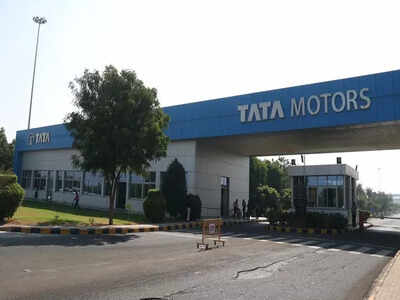Automaking giant Tata Motors is planning massive investment plans for the future, earmarking Rs 33,000 crore to Rs 35,000 crore for FY 26-30 on product actions. The Mumbai-headquartered company is targeting 30 product actions, including the launch of seven new models, as it looks to sharpen its competitive edge in India’s fast-evolving passenger vehicle (PV) market.As part of its long-term strategy, the automaker aims to secure a 16% market share, including electric vehicles (EVs), by FY27, rising to 18–20% over the next few years. Tata Motors expects the domestic PV industry to hit annual sales of 60 lakh units by 2030 and is positioning itself to ride that wave with a refreshed and expansive portfolio.“Looking ahead, we will strengthen our portfolio by FY30…7 new nameplates and 23 product refreshes will holistically enhance the portfolio,” the company told analysts in a presentation.The upcoming investments will focus not only on new launches but also on emerging technologies, powertrain upgrades and software-driven vehicles (SDVs), an area where Tata Motors plans to take a leadership role. The company is also expanding its sales and service network to keep pace with growing volumes.In the electric vehicle space, Tata Motors is betting big. It expected EVs to make up 20% of its total passenger vehicle volumes by FY27, which will further increase to 30% by FY30. Two key models, the Harrier.ev and Sierra.ev, are expected to strengthen its presence in this segment. The company also plans to improve total cost of ownership, especially for CNG fleet buyers, and expand EV charging infrastructure across smaller towns to ease buyer apprehensions.On the broader industry front, Tata Motors noted that its growth is driven by higher growth in consumption, rising PV penetration due to growing GDP and quicker replacement cycles.It predicted SUVs to continue dominating while the MPV category is also expected to see sharper growth in the domestic market. As for hatchbacks, the company pointed to lesser sales due to high priced entry-level models and fewer new launches.The company aims to reach EBITDA breakeven in its EV business by FY26.
Trending
- Total sown area this monsoon: Kharif sowing jumps 11.3% on strong monsoon; rice and pulses lead acreage surge
- Leadership shuffle: Tata Sons ropes in consumer veterans to Tata Digital board; balances earlier finance-centric line-up
- June GST collections 2025: Tax mop-up at Rs 1.85 lakh crore, up 6.2% on YoY
- Sensex zooms 12,000 points in just 3 months! Is the Rs 72 lakh crore stock market rally sustainable? Here’s what investors should focus on
- ‘Make in India’ success: Chinese smartphone brands bet on India for manufacturing & exports; Indian phonemakers compete for assembly
- ITR filing FY 2024-25: Why filing Income Tax Return is important even if you have no tax to pay – explained
- Indian Railways launches new ‘super app’ RailOne: Book IRCTC train tickets, track PNR, food, rail enquiry in one place – what it means for passengers
- Raymond Realty listing: Shares open below discovered price; brokerages still bullish on long-term prospects
- PM Modi’s visit to Namibia: Focus likely on diamonds, critical minerals; uranium talks also on agenda
- Gold price prediction today: Where are gold rates headed on July 1, 2025 and in the near-term?



